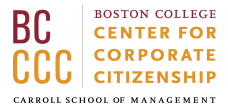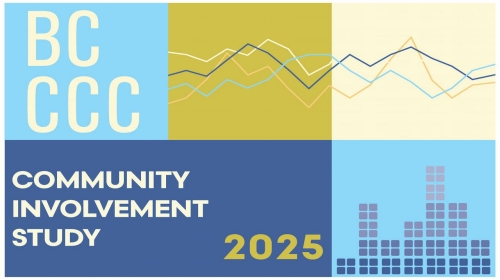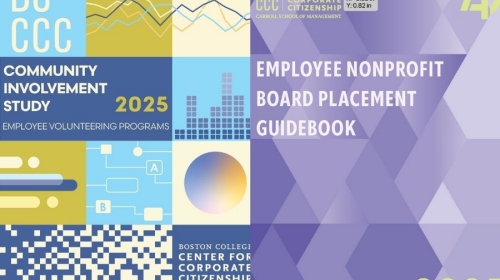WEBINAR: This webinar explores how corporate giving will be reshaped by the One Big Beautiful Bill. Hear directly from corporate citizenship leaders as they share innovative, real-world strategies that deliver impact for communities and results for business.
Working Caregivers: How Companies Support Employees with At-Home Roles

The surgeon general recently released a new public health warning on parental stress. Drawing on data from the American Psychological Association and other sources, the 35-page report suggests that parents are facing more stress now than at perhaps any other time in recent history. Two-fifths of parents say that on most days, “they are so stressed they cannot function,” according to the advisory titled Parents Under Pressure. Roughly half of parents term that stress “completely overwhelming.”
How does this relate to companies and employees? According to data from Guardian Life, nearly one-quarter of U.S. adults (22%) now split their time between full-time work and caregiving responsibilities—effectively “pulling double duty.” If your company supports working parents and caregivers through its employee resource groups (ERGs), employee assistance programs (EAPs), or other employee benefits, the following profiles are worth a read. And if you aren’t yet offering these types of supports, the insights and examples that follow—courtesy of BCCCC member companies UKG and FirstEnergy—may be even more valuable.
But first, a bit of context:

Why is support for working parents and caregivers so important right now?
The U.S. is aging. The 65-and-older set, in particular, is growing twice as fast as the rest of the population. By 2054, 23% of Americans will represent the senior citizen category. This growing demographic will need more assistance (in part from their working-age children) with everything from life’s daily activities to help managing chronic health conditions.
Kids, of course, need someone to care for them, too. And much has changed since the 1960s, when roughly 50% of mothers with children under 18 stayed at home full time. Families can’t afford to designate a stay-at-home parent. (Indeed, many struggle to afford outside help, including daycare—an important topic for a separate article.) Meanwhile, working inside and outside the home proves stressful for most; six in 10 working moms say it’s either difficult or very difficult and 52% of working dads agree.
Grandparents aren’t off the hook, either. A report cited by Financial Times indicates that 52% of British grandparents surveyed—more than half—play a regular role in “plugging childcare gaps” for their working children. With so many professionals working later into their 60s and 70s, this often means taking time off from their own formal jobs, at no insignificant expense—prompting some companies to offer paid “grandparental leave” benefits.
Further, as of 2019, the U.S. has the world’s highest rate of children living in single-parent homes. Single parents—and especially single moms—face even steeper challenges when it comes to budgeting their time and paychecks. When the pandemic hit, many were forced to opt out altogether: half a year into the COVID-19 outbreak, unpartnered mothers experienced the largest decline in employment among working parent groups. As of September 2020, just over 67% of them were still working, as compared to 76% six months prior. The rate of decline was nearly double for Black and Hispanic unpartnered moms.
Even now, the so-called “return to normal” hasn’t arrived for everyone. According to the U.S. Chamber of Commerce, an estimated one million women—many of whom left their jobs to take on full-time childcare duties during the pandemic—are still missing from the workforce.
It all adds up to a mental, physical, and financial bandwidth crisis for 100 million working adults who must somehow juggle their professional roles in the workplace alongside parenting and/or caregiving roles at home.

So, why do working parents and caregivers need support from their employers?
Going to work and showing up for dependent family members at home has never been easy. But the COVID-19 pandemic brought to light just how tricky a balancing act this can be—particularly when kids or other relatives need more time and attention than the typical 40-hour workweek allows.
Research suggests that working parents and employee caregivers report higher levels of emotional exhaustion and depression, along with lower levels of job engagement, than do colleagues without caregiving duties at home. Even before the pandemic, experts estimated stressed-out parents cost companies as much as $300 billion every year in the form of lost productivity.
Employers who lead the pack when it comes to recognizing and addressing these challenges may find themselves better positioned than competitors when it comes to talent recruitment, retention, productivity, and overall employee satisfaction.
“Working parents and caregivers make up a large part of our employee base,” explains Meghan Jurica, director, customer management at FirstEnergy. “It is important [to us] to create an environment that empowers employees to openly share what challenges they face to both increase awareness and actively address their concerns. We want to leverage the individuality of our employees as a competitive advantage. By supporting our working caregivers, we hope to create a better balance between career and family.”
Additionally—as both FirstEnergy and UKG recognize—supporting this particular demographic enables career advancement for a more diverse and inclusive workforce.
“We are committed to supporting all our employees—from recruitment to retirement—because we believe businesses succeed when all individuals are respected, all voices are heard, and all employees feel safe and welcomed as their whole, authentic selves,” agrees Pat Wadors, chief people officer at UKG.
What are the different ways companies can provide employee support?
The most obvious and immediate type of employer support comes in the form of flexibility. Companies can help their parent and caregiver employees by offering more flexible working arrangements: school-day aligned hours (e.g. 8:30 – 3:00), four-day workweeks, telecommuting, and the like.
And yet, not every job can be performed remotely or according to a more convenient schedule. For roles that can’t be flexed schedule-wise or transferred to a home office, taking some aspects of the actual caregiving off employees’ plates may be helpful. Some companies do this by providing eldercare consultants or other benefits as part of EAPs. Some companies offer in-house daycare or adult care facilities.
ERGs offer another valuable pillar of support to employees tackling multiple roles. Companies can also train managers on how to be more supportive of families.
“Managers need to make it okay for their team members to have conversations about the struggles they may be having related to work/life balance,” asserts Wadors. “They can demonstrate empathy by sharing their own personal struggles with juggling work and parenting or caring for aging parents. [They can] then model good behavior to prioritize family by taking time off and sharing how they work toward balance. For example, managers should communicate when they are taking an afternoon to attend their child’s baseball game or that they are checking in later in the day because they need to take a parent to a doctor’s appointment. Showing vulnerability is another way that managers can create a safe space for team members to share struggles… and creates a greater sense of trust. Forwarding articles about the challenges facing working parents or reminding team members about a manager’s open-door policy to discuss these issues can reinforce [that trust]. Managers can also regularly remind working parents about available support resources, like EAPs and wellness coaches.”
Last but not least, companies should practice listening in order to understand what their employees are voicing from the caregiving front. “Listen to and ask questions of this employee base,” says Jurica. “You can demonstrate that you value their perspective and input by acting on concerns that are raised.”

How can companies listen to the needs of working parents and caregivers?
"To gather information about our employees’ well-being, we conduct a global employee satisfaction survey (“U Krew Experience”–or UKX) twice a year. [This helps us] better understand the needs of employees and how we can best support them,” explains Wadors.
“Part of the UKX survey includes a series of Manager Experience (MX) questions where employees rate their direct manager in a variety of aspects, including how they support [employees’] work-life balance and how they show care. In our January 2024 survey, 93% of employees say that their manager cares for them, and 91% say their manager helps them manage obstacles.”
At FirstEnergy, employee surveys also come into play.
“FirstEnergy conducts employee engagement surveys which allow us to gain deeper insight on employee perceptions of our workplace and culture. We can drill down by age and employee business resource group (EBRG) to better understand [the working parent and caregiver demographic],” says Jurica. The company also hosts regular events that encourage open discussion. Individuals share their perspectives, experiences, and any challenges they are facing.

Top needs voiced by working parents and caregivers in 2024
Jurica says FirstEnergy parents and caregivers are especially interested in supports like:
- Flexible working arrangements, including remote work options
- Expert insights and strategies on time management
- Help maintaining healthy relationships
- Help navigating tough conversations with children
At UKG, the pandemic highlighted a broader spectrum of working-parent needs, and challenged the idea of one-size-fits-all support. “Post-pandemic, we launched ‘U Choose’ as a global benefit program that reimburses employees for the expenses that are most important to them and their families—however they define it,” says Wadors.
As its name would suggest, this benefit is all about choice, supporting “U Krewers” with a quarterly reimbursement amount available for use on certain expenses within one or more of the following areas: physical fitness, financial wellness, work/life well-being, and workplace experience. Under the work/life well-being category, employees can submit for reimbursement on expenses related to childcare, kids’ activities, and elder care.
What do ERGs for working parents and caregivers look like? What do they offer?
“When I learned of my mother’s gallbladder cancer diagnosis, a team member referred me to CARES [Chronic Illnesses, Awareness, Resources, Education & Support],” shared Tonya Evans, corporate public relations strategist at UKG, speaking of her own personal experience with the company’s ERG for caregivers. CARES is one of two employee resource groups in this category at UKG; last year the company also launched NEST, which provides resources and support to empower parents and caregivers to thrive at home, at work, and in life.
“I was immediately set up with a CARES Champion. [Champions] are U Krew team members who volunteer to support other U Krewers who have a family member with a chronic illness. They reached out to me to schedule an introductory meeting right away, and were there to answer any questions that I had throughout my mom’s treatment.”
Evans says she was lucky to have both a CARES Champion as well as a colleague and member of the group who was also a cancer survivor. “They shared information and provided tips on what my mom should take with her during her chemotherapy treatments. They also told me what to expect during the initial process. I think the most valuable conversation was when they shared insight on how I could best support my mom. There were times when I reached out to just to cry, and that was such a vital outlet for me.”
FirstEnergy says over 250 employees across its five-state footprint are members of its Family Network EBRG. The mission: to create awareness of issues and concerns working caregivers face daily, while aiding FirstEnergy Diversity and Inclusion initiatives. The Family Network group—employee-run with the support of an EBRG coordinator based in human resources—strives to provide workplace support that creates balance between career and family while taking steps to change the culture around caregiving.
The group has a chair, vice chair, treasurer, secretary, and several committee leads (e.g., event planning committee, communications committee). Family Network’s leadership team meets once monthly (and with the executive sponsor quarterly) whereas the committees meet on an as-needed basis depending on current activities in the pipeline. The company provides a budget for Family Network—as for all EBRGs—based on membership numbers, in addition to a set allowance for an annual signature event.
“We attempt to schedule some events over lunch hour to maximize the number of members available to participate,” offers Jurica, chair of the Family Network, in speaking to the accessibility of EBRG meetups. “We have also recorded events in the past to be accessed by employees when it best fits their personal schedules.”
Of course, the value of successful parenting/caregiving ERGs goes well beyond what happens at the office in group meetups or via online resources. “I was surprised at how great [ERG members] were at anticipating my needs,” Evans testifies. “For example, before my mother started her cancer treatment, they delivered a backpack full of things that she would need during her treatment days like snacks, books, a water bottle, and a notebook. It was such a kind gesture and really made me and my family feel like we were not going through this alone. My mother took that bag with her to every treatment.”
What other employee caregiver resources can companies provide?
At UKG, managers share a “wellness menu” that employees can access for a complete list of resources for working parents and caregivers. “We’ve always tried to remain on the forefront of exceptional benefits that show care, like offering student loan repayment assistance, pet insurance, and more,” shares Wadors. As part of its post-pandemic, redesigned benefit program, the company also offers:
- Increased flexibility, including some remote and hybrid schedules
- Increased focus on overall well-being around four pillars that include physical, environmental, emotional, and financial to achieve optimal wellbeing at work and at home
- EAPs that are available 24/7 and provide full-time employees and their dependents resources to assist with stress, depression and anxiety, drug and alcohol abuse, relationship issues, anger and conflict, parenting challenges, childcare and eldercare, managing life changes, legal and financial issues, work issues, and more
- The People-Inspired Giving Foundation—launched immediately after the pandemic—an independent 501(c)(3) organization that supports UKG employees and their family members by providing financial-relief grants during times of need. Since its founding in 2020, over $717,000 in grants have been given to UKG employees around the world.
FirstEnergy provides employees an Adoption Assistance program to offset up to $5,000 per successful adoption. The company also added a “Family Care Leave” program—based on Family and Medical Leave Act (FMLA) eligibility—which expands eligibility to 160 hours of paid family care leave on a rolling 12-month basis, plus an EAP to support a variety of employee needs.
The Family Care Leave program is open to full-time, non-bargaining employees and certain union members who need time off to take care of a family member. Part-time employees receive a prorated amount of Family Care Leave based on their average hours worked during the year. Eligibility begins the first of the month following date of hire, and qualified events must meet the eligibility requirements of FMLA, such as caring for a family member including the birth of a child, bonding with a newborn, placement of a child through adoption or foster care, or caring for a spouse, domestic partner, child, parent (including step-parent), mother-in-law, father-in-law, siblings (including in-laws), grandparents, and grandchildren with a serious health condition. The Family Care Leave program runs concurrently with approved FMLA, as applicable.
Employees have the option to take the leave all at once or intermittently (e.g., two days a week for ten weeks). Employees have 12 months from the date of the qualifying event to use the time. Any unused time after 12 months is forfeited without compensation.
How can companies communicate working parent/caregiver programs and benefits to ensure everyone knows about them?
To get the message out to its non-members, FirstEnergy introduces the entire total rewards package through its Employee Orientation program and through its new hire onboarding journey. Throughout the year, programs are featured on the company’s employee portal. At any time, employees can access detailed information on benefits and employee programs through the employee portal and SharePoint sites, and can reach out to FirstEnergy’s HR Help Desk with questions.
“Our EBRG is currently developing an enhanced SharePoint site that will consolidate resources caregivers might have an interest in, and highlight all the benefits available,” shares Jurica. “We have hosted events with our human resources department to provide an overview of relevant benefits. Upcoming EBRG events are posted on a shared calendar hosted on the company DEI site and emailed to members.”
Measuring the impact of ERGs and other resources for working parents and caregivers
Like most aspects of corporate social responsibility, there are ways to measure ERG impact that can be summarized in annual reports. Active membership numbers, satisfaction scores, event participation, employee retention are important performance indicators. UKG and FirstEnergy are still working on a formal measurement approach. For now, it’s the group member stories that prove the value behind the effort.
“From the outside, I think it would be easy to think that our ‘purpose is people’ mission is just a slogan,” Evans explains. “But it truly was the people-first culture at UKG that allowed me to be so present for my mom as she passed away. Knowing that I had a plan in place to meet my work responsibilities and the support of my manager and team was a priceless gift. I was involved in ERGs prior to my mom’s illness, but I am now more committed because I understand how life-changing they can be. I hope I can provide that same hope and support to a fellow U Krewer in the future.”
Related Content
This study explores shifting trends in employee volunteering, corporate giving, and other means of corporate community involvement.
This guidebook offers insights on placing employees in nonprofit board service roles.
This Member Meetup focused on strategies for building compelling business cases for corporate social responsibility initiatives. Two organizations shared their approaches to securing leadership buy-in and funding for CSR programs by anchoring requests in business strategy, quantifying value, and crafting persuasive narratives.
RESEARCH BRIEF - To examine whether CSR Activities affect Long-term Stock Returns, researchers studied 6971 observations of common stock of Japanese firms operating globally, along with accounting data and ownership data.
RESEARCH BRIEF - The study utilized a dataset of 28 globally listed airlines with 420 firm-year observations of ESG data over time.
Check out the latest findings and best practices from BCCCC's Community Involvement Board, comprised of corporate leaders working in corporate giving, community relations, and related roles.
Check out the latest findings and best practices from BCCCC's ESG Reporting Board, comprised of corporate leaders working in sustainability reporting.








